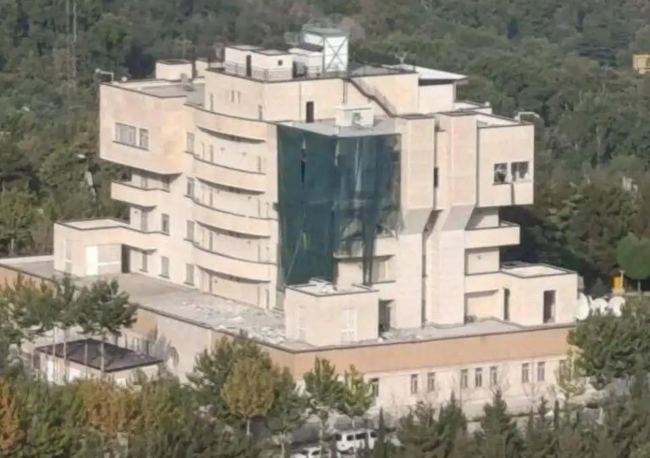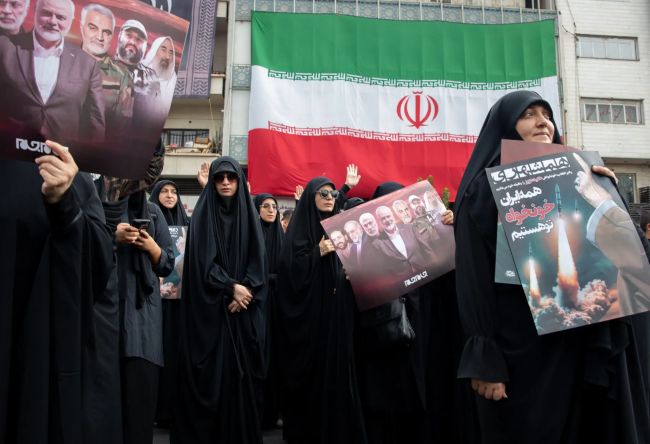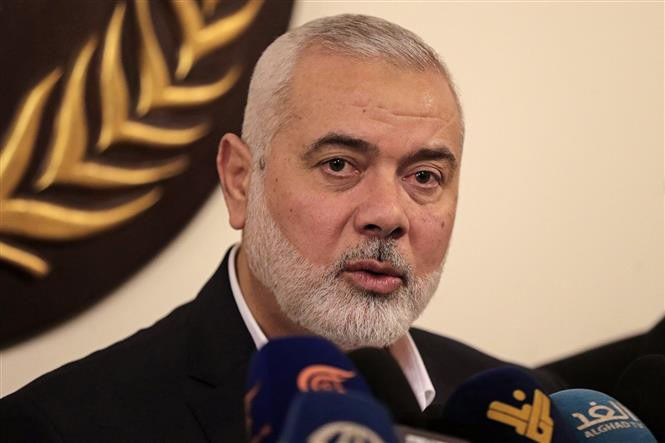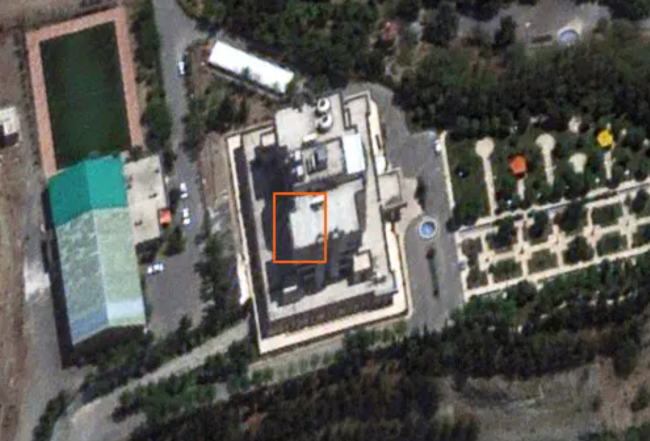It was not a missile strike, but an explosive device hidden in the Hamas leader's compound in Tehran that killed him.

According to an investigation by the New York Times, Ismail Haniyeh, a top leader of Hamas, was assassinated on July 31 by an explosive device secretly smuggled into the guest house in Tehran where he was staying.
The bomb was hidden about two months ago in the heavily guarded guesthouse, which is run and guarded by the Islamic Revolutionary Guard Corps and is part of a large complex called Neshat in an upscale neighborhood in northern Tehran, according to five officials in the Middle East who spoke to The New York Times.
Mr Haniyeh was in the Iranian capital that day to attend the presidential inauguration. The officials said the bomb was detonated remotely while Mr Haniyeh was in his room at the guest house. The attack also killed a bodyguard.
The explosion shook the building, shattered some windows and caused part of the exterior wall to collapse, according to two Iranian officials and members of the Revolutionary Guard who were briefed on the incident. The extent of the damage was also evident in a photo of the building shared with the New York Times.
According to Middle Eastern officials, Mr. Haniyeh, who heads Hamas' political office in Qatar, has stayed at the guesthouse several times during his visits to Tehran.

Iranian and Hamas officials said on July 31 that Israel was responsible for the assassination of Haniyeh, which threatens to spark another wave of violence in the Middle East and upend ongoing talks aimed at ending the war in Gaza. Haniyeh had been Hamas’s top negotiator in ceasefire talks.
Israel has not publicly acknowledged responsibility for Mr. Haniyeh’s death, but Israeli intelligence officials informed the United States and other Western governments of the details of the operation shortly afterward, according to five Middle Eastern officials who spoke to The New York Times. Secretary of State Antony J. Blinken said on July 31 that Washington had no advance information about the assassination plot.
Hours after the assassination in Tehran, speculation immediately focused on the possibility that Israel had killed Mr. Haniyeh with a missile strike, possibly fired from a drone or aircraft, similar to the way Israel launched missiles at a military base in Isfahan in April.
That missile theory has raised questions about how Israel could have evaded Iranian air defenses again to carry out such a brazen airstrike on the capital Tehran.
But it turns out the assassins were able to exploit a different kind of vulnerability in Iran's defenses: a security breach at the supposedly heavily guarded compound that allowed them to plant a bomb weeks before it was detonated against their target.
Such an act would represent a catastrophic intelligence and security failure for Iran and a major embarrassment for the Revolutionary Guards, which use the complex for secret meetings and to house important guests like Haniyeh, three Iranian officials said, speaking on condition of anonymity.
It is still unclear how the bomb was hidden in the guesthouse. Middle Eastern officials said the assassination took months to plan and required close surveillance of the compound.

Israel is believed to have decided to carry out the assassination outside Qatar, where Mr Haniyeh and other senior members of Hamas’ political leadership live. The Qatari government is mediating talks between Israel and Hamas on a ceasefire in Gaza.
The explosion on the morning of July 31 shattered windows and collapsed part of the wall of the building, according to photos and information from Iranian officials.
The device exploded at about 2 a.m. local time, Middle Eastern officials told the New York Times. Panicked building employees searched for the source of the loud noise, officials said, leading them to the room where Mr. Haniyeh was staying with a bodyguard.
The building's medical team arrived shortly after the explosion. The investigation team declared Mr. Haniyeh dead immediately. The team tried to revive the bodyguard, but he also died.
Two Iranian officials said the leader of the Palestinian Islamic Jihad movement, Ziyad al-Nakhalah, was in the room next door. Mr. Nakhalah’s room was not badly damaged, suggesting the bomb had been precisely planned to target Mr. Haniyeh.
Khalil al-Hayya, deputy commander of Hamas in the Gaza Strip, who was also in Tehran, also went to the scene and saw the leader's body.
Among those immediately notified was Gen. Ismail Ghaani, commander of the Quds Force, the foreign arm of Iran’s Islamic Revolutionary Guard Corps, which works closely with Iran’s regional allies, including Hamas and Hezbollah. Ghaani informed Iran’s supreme leader, Ayatollah Ali Khamenei, shortly after midnight, officials said.

Four hours after the explosion, the Revolutionary Guards issued a statement saying that Haniyeh had been killed. At 7 a.m., Khamenei summoned members of Iran’s Supreme National Security Council to his compound for an emergency meeting, where he ordered a retaliatory strike on Israel, according to three Iranian officials.
The capital Tehran, already under heightened security for the inauguration of Iran's new president, Masoud Pezeshkian, welcomed many senior government officials, military commanders and officials from 86 countries gathered at the Parliament building for the ceremony.
After the announcement of the Hamas leader's death, there was much speculation and controversy in Iran about the manner of the assassination. Initially, Tasnim news agency, the media outlet of the Revolutionary Guards, reported that witnesses said a missile-like object had crashed into Haniyeh's window and exploded.
But two Iranian officials, members of the Guards briefed on the attack, confirmed that the blast came from inside Mr. Haniyeh’s room and said that an initial investigation suggested the explosives had been placed there beforehand.
They described the precision and sophistication of the attack as similar to the tactics used by Israel to assassinate top Iranian nuclear scientist Mohsen Fakhrizadeh in 2020 for remotely controlled AI-equipped robotic weapons.
Israel’s assassination operations outside the country are largely carried out by the Mossad, its foreign intelligence agency. Mossad director David Barnea said in January that his agency had a “duty” to hunt down leaders of Hamas, the group behind the October 7, 2023, massacre in Israel.
“It will take time, like after the Munich massacre, but our hands will catch them wherever they are,” said Mr. Barnea, referring to the terrorists who murdered Israeli athletes at the 1972 Olympics.